papa-peppers guide to plant propagation – Grapes & Figs
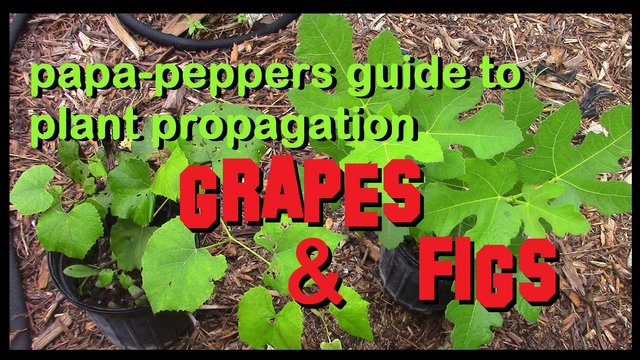
As you may be able to tell, I’m still working my way through some of the easier to propagate plants right now. If you are not familiar with plant propagation and have no experience in the process, I figured that basic, simple ways of making more trees, vines, and shrubs would be the best place to start. Many of these plants can be easy to come by in certain areas, and if you can successfully propagate a fig tree cutting, perhaps that will encourage you to try grafting a plum.
Many plants are actually incredibly easy to root from cuttings, as we covered previously with Passionfruit and Elderberries. For those examples I demonstrated how, with a little rooting hormone, a cutting from the “mother” plant should be able to turn into a whole new plant. Those plants, Elderberry and Passionfruit, may even root without the hormone. Many plant cuttings can grow roots just by placing them in a cup of water. There is always room for error, but the odds of success for some plants are definitely high. Here’s a few quick examples
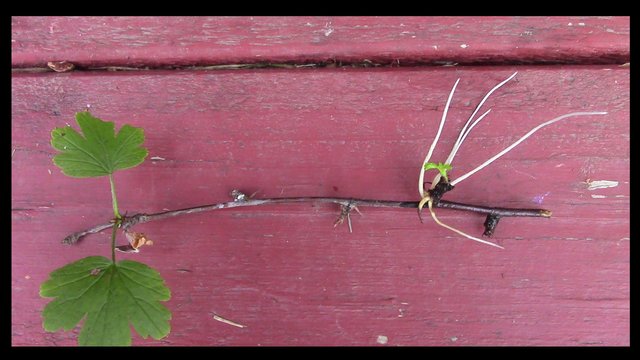
GOOSEBERRY
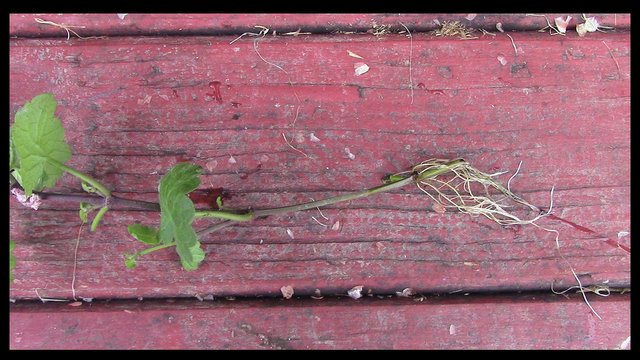
CREEPING CHARLIE
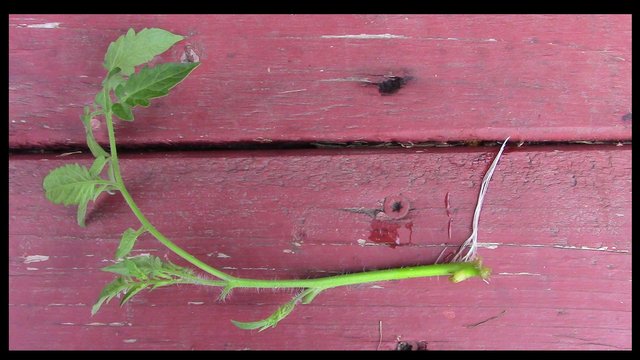
TOMATO
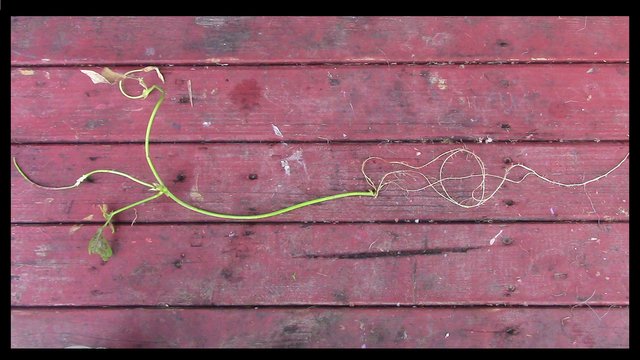
CHINESE NOODLE BEAN
Just by cutting a branch or stem off of the original plant and placing it in water, a new plant has begun to root itself. Figs and Grapes can also be propagated in this manner. Not only is it relatively simple, it is also super rewarding. Note the growth from the node below.
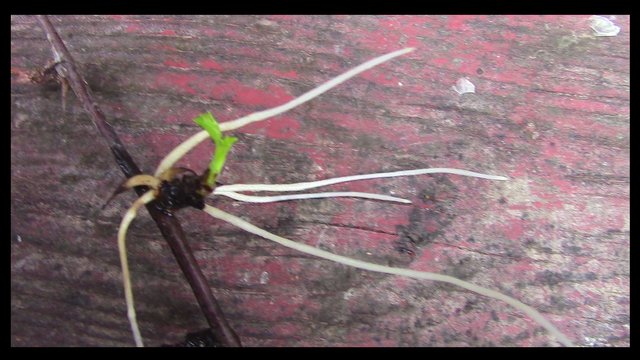
BOTH ROOTS AND A STEM GROWING FROM THE SAME NODE
The nodes are often where you’ll see new growth appear. This is where the flowers, stems, leaves, tendrils, or roots of many plants will form. I could propagate an entire new Gooseberry plant from just one node from an existing Gooseberry.
FIGS
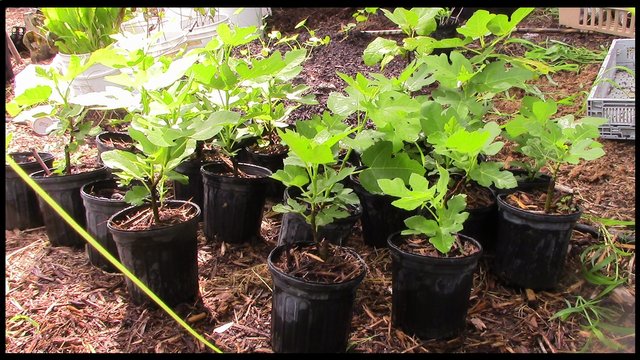
A fig tree is often more of a perennial shrub or bush. In some places, it will keep growing bigger every year, and in others it will die back to the ground in the winter and regrow in the spring. Either way, once the root system is established, you’ve pretty much got a fig tree on your hands. There are many common varieties across the southern United States, but there are some varieties that fair very well in the northern regions as well. The Chicago Hardy and the Brooklyn White are both northern varieties, named after Chicago, IL and Brooklyn, NY. I am currently growing both of these plus the Brown Turkey and Celeste varieties, all of which should do well here in Arkansas.
Anyway, if you have a variety available that will work well in your area, or a variety for a potted patio plant that you can move inside for winter, it’s easy to get some more growing. Though plants generally propagate best when they are dormant, this should work out too, so I’ll walk you through it.
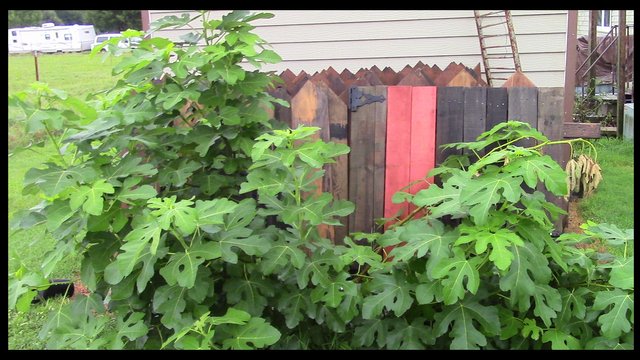
Here’s the “mother” plant from which I’ll get my cutting.
Since the tree is setting fruit right now, I want to find a little branch with no figs on it right now.

This little guy (with the red star on it) in the back should work out just fine.
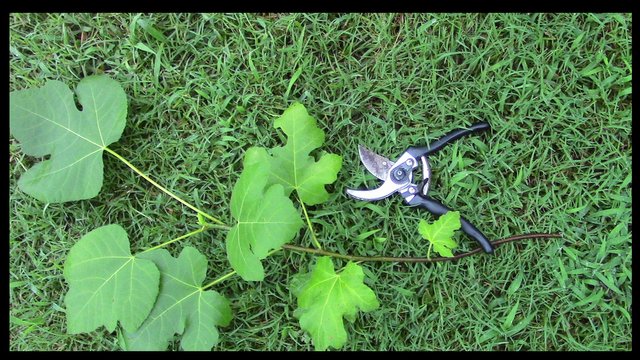
Once I snip it off of the mother, I examine where the leaves and nodes are.
Nodes are where the leaves, figs, or roots develop. I find that it is best to leave at least three nodes on each cutting. This way, one node can be left above the ground to grow leaves, one node can be pushed into the dirt to grow roots, and the middle node can be positioned just beneath the soil surface, giving it a chance to both root and maybe send a stem upward too. I believe that it could be possible to get an entirely new plant from just one node (like I did with the Gooseberry above), placed and the right level, but perhaps I’ll experiment with that later.
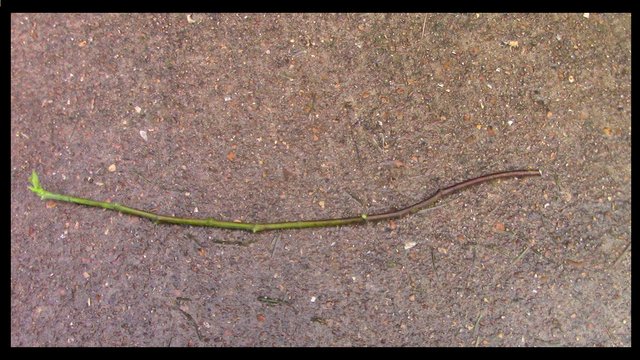
Then I remove the leaves.
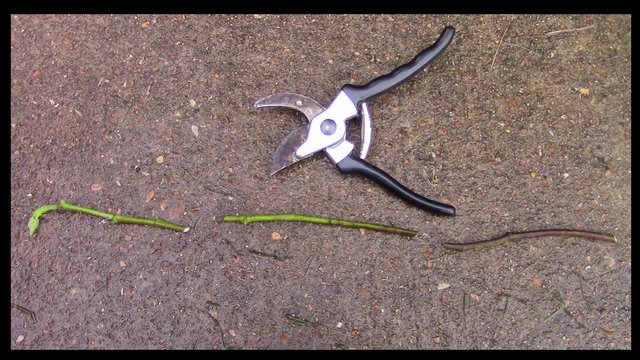
And I cut it into appropriate sections.
I like to make a mini greenhouse to provide water and humidity to the fig cuttings. This is the best method that I have found to get the cuttings to start budding and rooting.

My mini greenhouse.
I like to use a glass far for the bottom and screw on a plastic cup for the top. When it works, success is obvious.
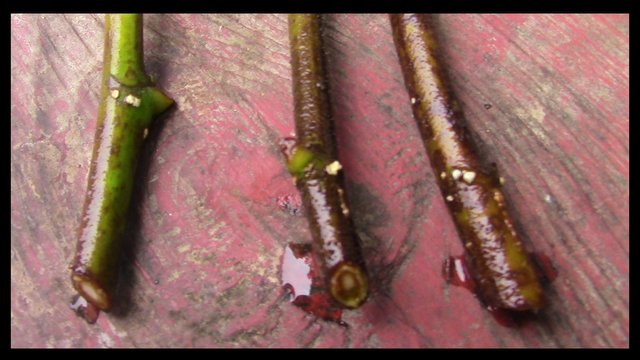
The white dots at the base of these cuttings are baby roots.
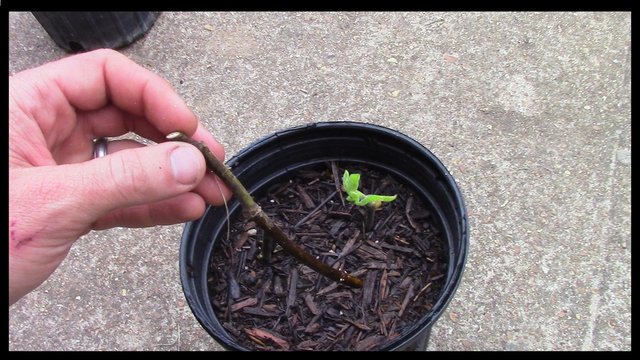
Once I know the rooting process has begun, it’s time for soil!
When planting cuttings that have started rooting, it is important not to damage the new roots. If the roots on these cuttings were much longer, they would surely break off if I tried to force them into the soil. For planting cuttings with longer roots, I like to fill a only partially, and stand the cutting up on top of the soil. Then I add more soil until it reaches the desired level, packing it in around the cutting and roots rather than forcing the cutting through the soil.
GRAPES
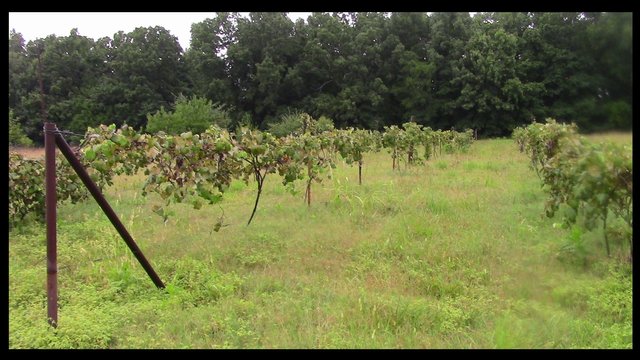
Grapes are another “easy” plant to propagate simply with cuttings; no need for rooting hormone. If you’ve ever seen a Concord Grape vine, you should know that it originated back in 1849. Since that initial plant was bred, it has been propagated all over the place just by rooting or grafting cuttings. (I’ll cover grafting plants in some future posts.) Of course a rooting hormone can help this process, but if you keep the cutting moist, it should root anyway.
Again, this would be best to do when the plant is dormant in the winter, but that is not a necessity.
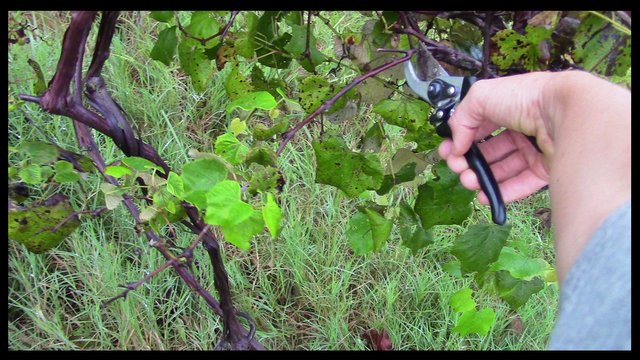
Selecting a vine for propagation.
Select your vine, and cut it off. Just like with the Figs, you may be able to get multiple plants from a single cutting. Also, since the process is easy, cut a few if you have the opportunity and try to make some extra.
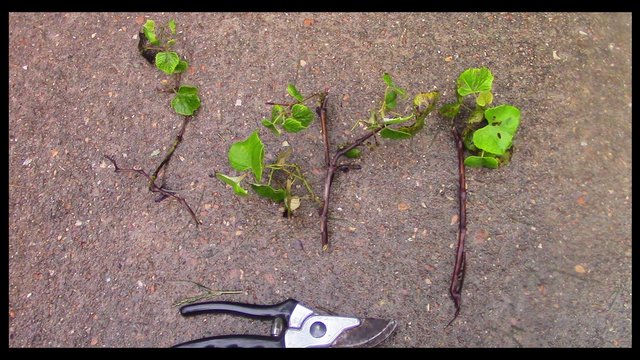
The same branch divided into multiple cuttings.
I remove most of the leaves after the vine has been cut into pieces of desired lengths.
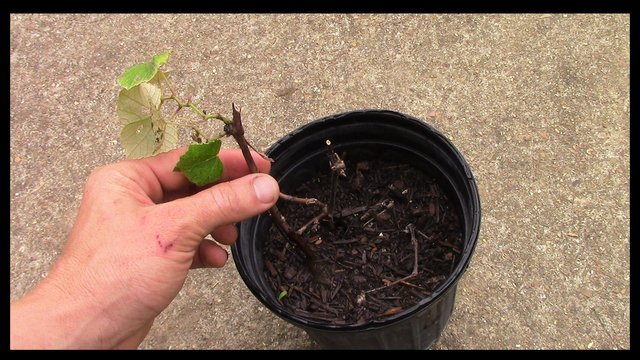
Planting cuttings in the soil.
Once these are planted, as long as the soil remains moist, the success rate should be reasonable. I had some various dormant cuttings from Wisconsin that I tried to propagate this spring, and I had about a 50% success rate. I would suggest that if you want five new grapevines, try to propagate ten. If they all take, you can gift the other ones to family of friends.
CONCLUSION
This is another very simple way of propagating plants. I call it making free food. This is what the finished product from this process looks like.
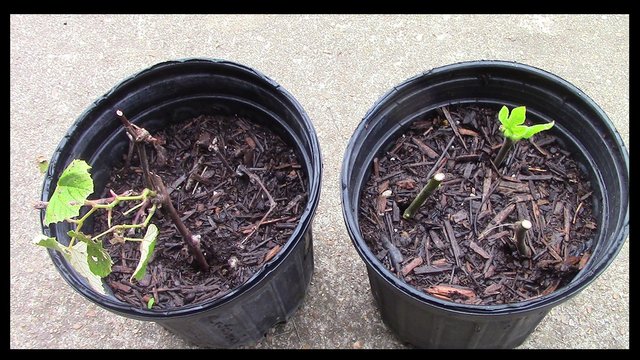
I’m hoping I’ll be eating some figs and grapes from these within a year or two.
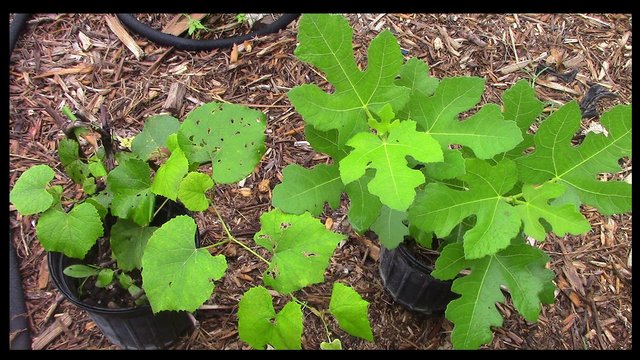
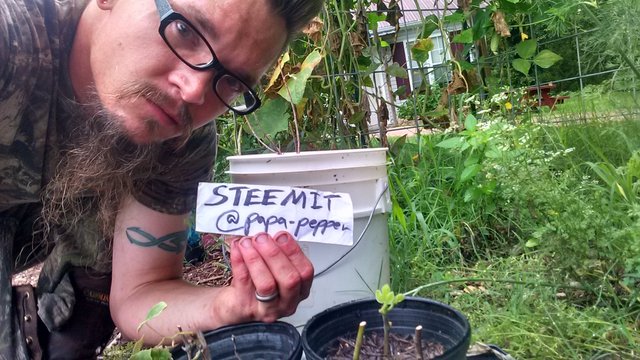
You are doing some great work with these posts. Hopefully people will start to figure out that you are providing a valuable service, that this is some potentially life-saving information. Being able to grow at least some of your own food should be a small goal for everyone. Great work.
Thank you, without food we will all die and I'm growing tired of things pretending to be food. At least I know where the food from these plants came from.
Great series, please keep 'em coming. Tomato plants from clippings. It should have been obvious since it seems a lot of vine plants will propagate, but I'd never considered it before. For years I would just stop by the local hardware store and pick up a bunch of seedlings each spring. Now I have another way to get my tomato plants.
Glad to help. It's almost like printing money!!
Papa pepper's pimping plant propagation proof.
Dude i'm amazed at the speed you can pump out these highly detailed articles, Getting it done and blogging about it, it's impressive, keep it up man.
I appreciate that. I work hard anyway, and seriously treat this like another job. Thanks for the support and encouragement @solar!
I just did what you did with your grapes. Hopefully it works.